Anyone who has even thought about prepping quickly came to realize that it’s not a hobby for the faint of heart. One look at what it costs to build a stockpile is all it takes to send many potential preppers packing. I personally know quite a few people who have expressed interest in prepping, but haven’t started. Their reason, in every case, is not having the money to do it.
Keep in mind that none of these people have actually sat down to calculate the cost of prepping. Nor have any of them looked at how to make prepping any cheaper. They are all basing their opinion on a vague idea of how much they spend per month on their grocery bill. That alone has been enough to relegate prepping to the “nice to do if I can afford it someday” pile.
The difference between those people and us is that we’ve found a way to make prepping an integral part of our lifestyle. For some, that has meant making some pretty heavy sacrifices in other areas of their lives. For others, it’s about finding a way to make prepping cheaper. Still others have found ways of integrating their prepping in with other areas of their lives, making the overall cost something that they can handle.
Regardless of which group you fall in, we can all use a bit of savings on our prepping efforts now and then. So, whether you’re a new prepper starting out or you’re looking to expand your stockpile so that it has enough to last you a year, I’ve searched out the best bargains in foods that you can stockpile.
Keep in mind that we’re talking about a survival diet here, not a normal everyday one. It’s intention is to keep you alive, hopefully while providing enough nutrients that you can continue to function. It’s probably not going to be the foods you like or provide convenient foods to eat; but it will put calories in your belly, so that your body can keep on going.
White Rice
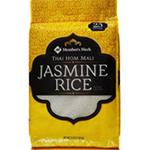
Probably about the cheapest food you can buy out there is white rice, especially if you buy it in 50 pound bags. Rice is a staple in much of the world and can be combined with a wide variety of other foods, acting as an expander and providing much-needed calories, especially carbohydrates, which the body readily turns to energy.
A 25 pound bag of white rice at Sam’s Club sells for $0.38/lb.
Pinto Beans
Beans of all sorts are a great source of protein, as well as carbs, fiber and iron. Of all the beans available, pinto beans are the most common, helping to keep their price low. In doing so, they become the best single food for preppers to stockpile. Just make sure you stockpile a variety of recipes to go with them, so you don’t get tired of the same thing all the time.
A 50 pound bag of pinto beans at Sam’s Club sells for $0.64/lb.
Lentils
While any sort of beans can be good, lentils seem to be a great choice. Not only are they high in calories, but they’re high in carbohydrates and protein as well.
Some people consider them a superfood for their high nutritional value. Most often used in soups, there are actually a number of different things you can do with them.
You can find dried lentils in your local grocery store for about $0.99/lb.
Cooking Oil
If you’re going to have rice and beans, you probably need some cooking oil to go with them. While there are ways of cooking both of those food items, without using oil, having oil on hand will help to give you more variety for your palette. It also provides a good source of unsaturated fats for your body.
To make the most out of your food budget, go for the lower cost cooking oils, like Canola Oil. This is also sold as “vegetable oil,” or “safflower oil.” If you buy it in restaurant packs of 35 pounds of oil, you’ll get the best price. The only problem is that you’ll have to decant it into smaller containers to use it.
A 35 pound box with plastic liner of canola oil at Sam’s Club sells for as little as $0.24/cup
Flour and Other Grains
Bread, in one form or another, has been a staple of diets around the world for centuries. Of course, bread takes many forms, not just the loaves we know here in the USA.
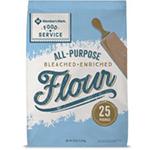
The high amount of caloric energy stored in grains makes it an ideal food for those who need full bellies, but don’t have a lot of money to spend. While grains don’t offer a lot of other nutrients, they are high in carbohydrates, providing energy.
A 25 pound bag of wheat flour sells for as little as $0.33/lb. at Sam’s Club. Other grains will be more expensive.
Related: A Forgotten Wild Edible: Pine Bark Flour
Corn Meal
You may not do much cooking with corn meal, but there’s actually quite a bit you can do with this pioneering basic.
To start with, you can make cornbread and cornmeal mush; two recipes which have stood the test of time. A little digging around will reveal other options to you.
A five pound bag of corn meal costs about $1.98 at the local grocery store or $0.48/lb.
Chick Peas
Also known as “garbanzo beans” chick peas are a common food in Mediterranean countries, with a lot of different recipes made from them, like humus.
While not as high in protein as pinto beans, they do pack some protein, as well as a variety of other nutrients.
Just make sure you find recipes you can make out of them, so that you can get the most mileage out of your chick peas.
A one pound can of chick peas or garbanzo beans should cost $0.99 at your local grocery store.
Related: Bean and Rice Survival Soup – Easy and Adaptable Recipe
Ramen and Other Pastas
Every college student knows that the cheapest meal around is a package of Ramen. While not exactly gourmet, Ramen does fill your belly and provides a good source of carbohydrates. You can doctor it up too, adding your own dehydrated vegetables and meat, turning it into a hearty soup. Ramen will keep forever as well and comes with its own seasoning mix.
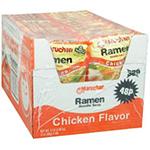
Of course, Ramen is nothing more than pasta; cheap pasta. Any other pasta could be stockpiled as well, although it won’t be as inexpensive as the Ramen is. But those pastas work great as a food expander, adding them to soups and using them to make casseroles.
Five packs of Ramen go in the local grocery store for about $1.00
You can buy larger packages of pasta at Sam’s Club for about $1.00.lb.
Oatmeal
I’m not talking instant oatmeal here, which is considerably more expensive; I’m talking about good old-fashioned rolled oats. The kind that take 5 minutes to cook, rather than 60 seconds of just stirring in hot water. Nor am I talking about the flavored varieties, which cost considerably more. You can add your own flavor a whole lot cheaper.

The trick is going to be finding rolled oats, especially in the larger packages which provide the best pricing. But it’s still out there, otherwise we could never have oatmeal cookies.
You can buy rolled oats (oatmeal) in one pound containers for about $1, or 25 lb. bags at Sam’s Club for about that much per pound.
Related: 24 Food Items To Hoard
Powdered Milk
While not everyone’s favorite, one of the best nutrition deals out there is powdered milk.
Pound for pound, you’re going to get more out of that powdered milk than you are from just about anything else you can find.
The best brands, taste wise, are the Augason Farms and the Nido brand by Nestle.
Bought in 5 pound packages at Sam’s Club, this will cost you $0.24 per 8 oz. glass.
Turkey
If you want some real animal protein in your survival diet, then I’d recommend buying turkeys at Thanksgiving time and converting them to jerky. Most grocery stores have a sale on turkeys right before Thanksgiving, selling them at a considerable discount. While some grocery chains will limit the number of turkeys you can buy per trip, they won’t limit the number of trips you make; nor will they limit how many family members can buy a turkey.
One year I bought a dozen 25 pound turkeys in the before Thanksgiving sale. That gave us one turkey per month, for the next year, saving us quite a bit on our grocery bill. But that was before I was doing my own dehydrating. Now, with a dehydrator, I can turn that turkey into jerky, packing it away as part of my stockpile.
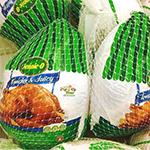
Raw turkey can be extremely difficult to cut, especially if you want to cut it neatly. What I recommend is to make the cutting a process, as the turkey thaws. Only cut off what you can cut easily; ideally the part which isn’t quite frozen, but isn’t quite thawed either. Then allow the it to thaw a little more, offering you more meat that is easy to cut. Keep going in this manner, until you’ve stripped the meat off the bones.
Currently the average price for turkey is $1.60/lb. but if you catch it before Thanksgiving, it’s about $0.79/lb.
Related: How to Can Your Leftover Turkey
Pork
I hesitate to put pork on this list, simply because it has to be very well cooked to kill of parasites. Having said that, I’ve been getting some amazing deals on pork lately; approaching $1 per pound. More than anything, I’ve been buying pork loin, because it is a large piece, with almost no fat. This makes it ideal for slicing up and making jerky out of. 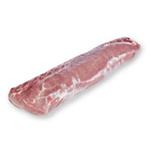
What? You didn’t know that you can make pork jerky? Well, you can. You just need to be careful to dehydrate it fully and use plenty of salt. Once dehydrated, it will store for years, as long as it is kept in an airtight package. Then, when you’re ready to use it, you can rehydrate it in soups and other recipes.
I just checked and Sam’s Club has whole pork loins for $1.68/lb.
Related: How to Make Spam
Drying Your Own Foods
Just as with that turkey, there are many other foods which you can dehydrate inexpensively, storing them away as part of your prepping stockpile. The real savings is that you’re doing the dehydrating yourself. But in doing so, you store foods away that you might not otherwise be able to store, as well as doing it at a price that’s hard to beat. That’s even more true when you catch the foods in season and on sale.
Here’s a sampling of foods I’m recommending and their prices in my local grocery store:
- Potatoes – Russet potatoes go for about $0.35/lb.
- Sweet potatoes – A little more expensive, at $0.88/lb.
- Carrots – You can get them for less than $0.99/lb. if you buy them in five pound bags.
- Bananas – Typically run at about $0.48/lb. Banana chips are great.
Of course, if you grow your own fruits and vegetables, then dehydrate them, you’ll be getting an even better price on them.
You may also like:
The SHTF Diet: Minimum Food And Water Supply For 3 Months
10 Things Cowboys Carried With Them in the Wild West to Survive(Video)
How $5 A Week Can Get Your Family 295 Pounds Of Food
Meal Planning: A Month’s Worth of Survival Food with 2000 Calories per Day

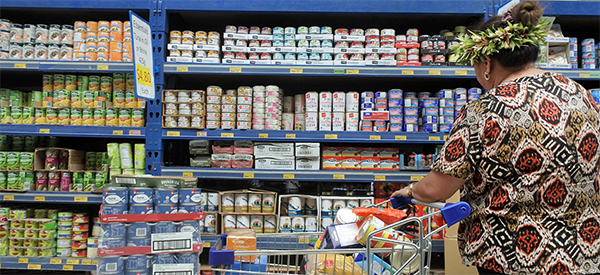
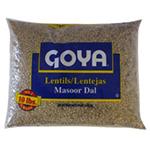
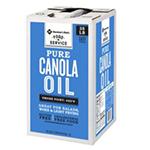
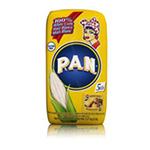
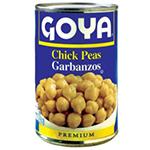
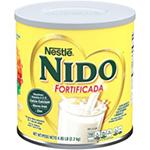














Every one needs to prepare with simple things. I have been in Tsunamis, tornadoes, hurricanes, been without electric and water in my home for more than a month. I figured out how to cook in a box with tinfoil and the sun to feed my kids. always be ready for anything …always
I wholeheartedly agree; while I have gote through different catastrophic events; my family learned to cook over the mantle of the Coleman lanterns by removing the lid & propping the Wok atop some rocks. Necessity is the ‘Mother of Invention, especially for preppers.
echo, you may have ( knowingly or not) stated one of the most important learning points that can be taught on this site. Let the wind or ice storm, or power failure hit you or your neighborhood or entire town for 2 or 3 days. That’s the most valued lesson you can get ! What do you have, what do you need? How can you improvise? When you go a day having to quench thirst, feed your face, warm your butt, scrub your nuts, and all the other daily things we take for granted, the body reminds the brain to make a better plan for the future….
M+ Nam ’68 Once we didnt get resupplied for 2 weeks…Temp 105+ Lost 32 lbs.
Case of the “hungers.” big time! Lesson learned. Now…maxed food/supplies…you never know…e.g. break in the food chain…local big box stores (NH) quite a few empty shelvers.
Worker: “we’re only getting 60% of our re-orders. People’s baskets piled high. Practice “situation awareness.” In addition, home defense…your call. In time, perhaps the “golden horde” will come knocking” Decide now!
Father Chuck…
We have found that cooking oil and top ramen go rancid within a very few months.
We’ve experienced ramen noodles going bad as well. It was more than a year after the best buy date though.
We use lard and render a new supply each fall.
Janeane: I don’t know how you are storing your oil and your top ramen, but I have cooking oil in my kitchen that is who knows how old and if it is rancid, I cannot detect it. Same with top ramen. Kept in a even-temperatured, dark place, it lasts for years and years. I rarely use the condiment package that comes with the ramen, I keep it mainly for the noodles. Even if the condiment package is spoiled, that does not mean the noodles which are factory dried quite thoroughly are bad. Add the noodles to a cup of bullion and you have basically the same dish as the top ramen package. The noodles added to a can of peas makes a more filling meal than just the can of peas. Through in a couple of slices of Spam and you have a meal in a bowl. Add the noodles to a can of soup and you have turned a single can of soup into a more satisfying meal for two and added to the caloric content of the can of soup which is pretty slim. The value in the top ramen noodles is unlike other pasta which has to be cooked for a considerable period of time, just adding boiling water to them almost instantly returns them to an edible state.
Not so! I have had Ramen in my preps for 4 years plus that I pulled from to eat and they were.
Mike: Maybe I am just a little dense this evening, but I don’t understand your post. Was the ramen good or bad after four plus years?
they were,,,what?
I don’t understand this one. Cooking oil can be pressure canned in smaller quantities. I use Tatler lids whenever possible, but catching the metal lids on sale are always good to have on hand.
I have never had a problem with rancidity of ramen either & I have lived in high humid climates. I do go through large quantities of Calcium Chloride for just that purose.
That is true. All oils are actually juices, and juices go bad very quickly – especially IMPORTED oils. In fact, if you live in USA you should not even be buying imported oil because it ARRIVES SPOILED and most people think that’s how its supposed to taste. If you’re going to buy jars or cans of oils buy ONLY products of USA!!! But for emergency stick piles, it is much better to stock the spay oils, the kind for pans. They last much longer and require less because all you have to do is give a little spritz to the pan or to the food item itself.
Nearly all dried pasta lasts for a long time. But as with anything edible, eventually EVERYTHING will go bad (except possibly a McDonald’s hamburger). Whatever SHTF event may come in the future, you just have to hope its a short-lived event. However, once the Antichrist takes power, the only one that can rescue you at that point is the Messiah Himself. Or death.
Truth: amen. We produce high grade oliive oil in Arizona, but we and Kali-fornia are so under-cut by governments in Europe a lot of farms have to sell cheap. the dems made a trade deal with Europe over it. But, rancid hath its uses. Lamps, or in fall, bury it in the garden and by spring it’s nitrogen rich fertilizer. Same for any fats. We use tallow and lard, and when they turn from overuse, they get buried in the garden. One nice thing about having ground squirrels and packrats, you always have a deep hole to dump stuff like that in. And then the critters move on to help a little more 😉 niio
I’m no expert here, but I have read that the taste of non-fat dry milk will be improved if a little vanilla flavoring is added. I expect that chocolate flavoring will help, too.
YMMV.
I would think cocoa powder mixed with dry mile would make a palatable beverage. I have read someplace that I don’t recall that pure cocoa powder has an indefinite shelf life if kept dry and reasonably cool.
I swear I typed “dry milk” and it was “dry milk” when I hit the reply button.
Now this post is a good example. I just typed “when” and good ole predictive decided that “the I hit” was a better choice of words.
it’s cool, chuck…the E and the K are right next to each other ,right…could happen to anyone.. ~=)
Powdered milk always tasted awful to me, it’s OK for cooking, but drinking it was another thing.. until, I was doing a ton of dehydrating for a long hike and bought some of the Nestlé‘s Nido powdered milk to put into dehydrated meals. Had some leftover, mixed it up put it in the fridge and then tasted it. It was like day and night from the powdered milk on the grocery shelf. I could mix that stuff up and drink it straight, it tastes amazingly good, in my opinion it tastes like regular milk. Now, I try to keep this on hand for cooking or drinking because it really does taste like milk. give it a try, you might be surprised! I know I was!
Nido is baby food, means the nest, but they usually have good quality anything. How high is the fat content? That’s where the flavor of milk comes from. Powdered milk is usually made of skim so the taste is gross. I was raised around cattle and we always had at least a small dairy herd, cattle and goats.
My experience is prepared powdered milk sweetens after it has been chilled. I have no experience with Nido.
Good article. Yes, there’s variations to food longevity based on region and humidity levels. In dryer climates, food generally lasts longer than higher humidity environments, unless one packs it to last, ie: dehydration and oxygen absorbers.
Yeah. But with our heat (I’m in south central, 40 miles north of Tucson) flour and cooking oil still go rancid. Stuff like that should be stored in small jugs, a gallon or two, with CO2, no? Less oxygen, less oxidization. niio
I keep about 20-30 cans of Hormel Smoked Han canned in water on hand all the time. It has 2-3 year shelf life/
‘best by” date and we rotate it as we use it for ham salad etc. Costs a little over a $1 to $1.40/can
I’m fixing to go out in the moonlight and grill ribeyes and some of my neighbor’s homegrown jalapeno and cheddar pork sausage, but in my younger days I was poor and sometimes homeless so I lived off a prepper type diet. Pinto beans are the most delicious food in the world, but take a long time to prepare. Since you also have to consider stockpiling cooking fuel, I have to recommend the humble lentil. Cooks down into a soup in an hour and welcomes any spice, add any meat or vegetable, I have lived off 5 bucks of lentils seasoned with salt and pepper collected at McDonald’s for an entire week, more than I care to remember.
There’s an Indian food store across the street from me, so I go in there a lot. One of the items they had was a sweet lentil pudding… haven’t tried it yet but I think I will. Indian food is actually decent prepper fare as many of the things are shelf stable, low cost and will store well at higher temperatures. Don’t forget…if it’s a grid down situation, we lose a/c and fans as well as refrigeration.
Since beans and rice require water and cooking, I agree that canned goods may be better for shorter term events. If worse comes to worse, you can eat them directly from the can, cold.
Miz Kitty: We’re in a better situation. Stews can be dehydrated in the summer, as can be most anything cooked. Re-hydrated refried beans used to be a common item in stores.While I don’t care for it, there are kinds of precooked, dehydrated rice dishes out there, as well. Have you tried to integrate a food dryer with your oven? It uses waste heat from the oven. Just please be careful. Another one is a sheet of metal or plexiglass over a box by a sunny window. The dryer sits on top of it with vents. As memory serves, the heater is only a few inches thick and lined inside with aluminum foil. niio
I have an electric oven – excess heat vents through a burner on top, so I’m not sure where I could put the attachment you’re referring to. I run the oven only when necessary, because the kitchen gets far too hot, especially in the summer. I’d LOVE to get a small electric dehydrator, simply because if I tried to dry food outside the seagulls and squirrels would wind up in a Battle Royal to see who gets the spoils and the neighbors would likely complain! That’s not even considering insects. I plan to save up for one this year, and some canning supplies, too. For now though, I’m concentrating on picking up commercially packaged product – for me it’s easier and more affordable right now.
Same here, an electric oven. I pull the back burner and plate off the vent and use that. The height over the vent has to be watched and adjusted as needed. Old gas stoves were better, just leave the pilot burning. If you get a dehydrator, you’ll need one with a fan or the food might mold in all that humidity. A burner dehydrator can be made of an old waterbath canner with a large hole in the bottom and no lid. Some friends from China use cans from cooking oil, just add metal wire shelves. Best is, always, the wood and coal stoves. An older sister got one and has a rack for over it in winter. A lot of deer were turned into jerky on it 🙂
the seagulls would win, meaner attitude.
A good solar dryer is covered in fly screen! If we don’t, yellow jacket wasps have a feast joined by mobs of birds and packrats. Speaking of packrats, I asked someone what they did with them. Answer: Tastes like rabbit and is less likely to carry diseases than wild rabbits. And, now, when I work in the garden the thrashers who spy on me are joined by doves. Might be some squab in my future, if I can get to their nest. They nest on cholla cactus, AKA jumping. Sneaky of them.
Looks like a good place to ask this question based on the expertise I hear. What is the best way most people balance acquiring large quantities of supplies (i.e. oil, rice, grains) and rotating the stock when there are only two of us in the house. Obviously, it’s counter-productive to plan ahead only to have things go rancid or spoil. Sorry if this is something I should already understand.
Doug: That is a problem that I face. The two of us just don’t consume that much any more. I am certainly not the paragon of food storage, but when I make a purchase that is for our emergency supply, I date the top of the can with the date the manufacturer stamps on it, whether it is use by or best by or whatever nomenclature they use with a broad tip black felt tip pen. If the top is painted with a dark color I use a silver paint pen. That makes the date easily visible to me when I am searching in a box for the oldest can.
I don’t have room for large rack storage shelves, so I reinforce cardboard boxes and store my canned goods in the cardboard boxes. If I have more than one box of, say, Spam, I number them #1 and #2, etc. The newest cans go in the #2 box. There is no way around it, it’s a lot of work keeping things rotated. I limit my purchases to items that contain (1) lots of calories (2) vegetables. I only buy items that meet those criteria. I don’t stockpile items I like but that are calorie light such as mushrooms and olives. I like ripe olives and mushrooms but they are both calorie light. I know the mushroom growers of America will loudly scream that they contain nutrients that are necessary for a rewarding life. Yeah, but they take up storage space and reward you with zero calories or such a low calorie count as to be useless. In an EoTW situation, we are going to be calories starved and it behooves us, in my opinion, to only stock food that is calorie dense.
Now, of course, if you live on 300 acres in some rural area and have a 10,000 square foot, temperature controlled reinforced building and the unlimited budget to restock it, you can certainly afford to stock it with all kinds of delicacies. I don’t have the storage space nor the budget. So it is calorie dense. I try to stock stuff I know I will eat. I like Spam, despite what others may think of it. I despise sardines and anchovies in oil. While I fully recognize that both the sardines and anchovies are calorie dense and better for me than Spam, I know I will eat the Spam and use the sardines and anchovies for bait or to feed the dog. So I stock Spam and skip the S&A. I will use black walnut hulls for fishing
I don’t worry about the dates printed on cans by the manufacturer. It is only for legally imposed purposes. First, some states require it. The risk management attorneys that the firm hired strenuously recommended it. Thirdly, it sells more product because so many folk are paranoid about the best by date the they throw away perfectly good food. I mark it on the can because it is a handy way to track how long the stuff has been sitting in my food storage room.
I grew up in an era where food was too scarce to throw away unless it was absolutely putrid. If we couldn’t eat it, the dog managed to scarf it down without ill effect. Manufacturers and lawyers hadn’t discovered “Use By” dates yet and cans were unmarked as to when they should be discarded. Folks were expected to use common sense (which these days is so uncommon that the name should be changed to Uncommon Sense.) If, upon opening a can, the odor permeated the room and made you gag, you gave it to the dog. If he wouldn’t touch it, you put it in the garbage can for Henry Jankowski’s pigs to eat. If it smelled like all the other cans you had opened, you had it for dinner.
I try to save stuff that just doesn’t go bad. Pasta generally, kept dry and in a reasonable cool, dark place doesn’t go bad. It may loose some of it caloric value as the decades pass, but it still will fill you up. The list above gives you some idea of foodstuffs where, reasonably stored, will give you shelf life past your own shelf life.
I don’t store stuff on open shelves for another reason beyond I don’t have room for large storage shelves. I buy food on line and many times it arrives in styrofoam ice chests. I keep them. They are ideal for storing food long term. You aren’t keeping ice cream from melting, what you are trying to do is avoid extreme temperature swings. It is better to store food at a constant 80° than it is to store it where the temperature swings from 120 to 35. Storing food in styrofoam ice chests ameliorates the temperature swings. On the day that your garage is 120° inside, the cans stored in the ice chest(without ice, of course) may get as warm as 80°. On a cold winter day when your garage is below freezing, your cans stored in the ice chest may only be as cold as 50° Inside the house, if you have room, the temperature swings will be even less. For items that I store in my car, I wrap them in several inches of newsprint sealed with either packing tape or just plain old masking tape. I wrap them in the newsprint until it is several inches thick on all sides. I have eaten SOS bars (emergency food for emergencies at sea) many years past their recommended shelf life which is usually five years if I recall correctly. They tasted okay to me. I am alive to write this, so they didn’t kill me. At this date, I don’t remember if they were five or eight or more years past their use by date. They were wrapped in about three inches of newsprint which kept their temperature much more moderate than the ambient temperatures in my van in Southern California winter and summer.
I hope my long post has helped you in regard to food storage. Don’t get too wrapped up in Use By dates. Worst case, someone comes to your door after the world has ended demanding food, give them the stuff stamped 1986 and tell them it’s what you have been eating.
If you have any question, please post them and I will try to answer them the best I can based on my experience.
Thanks for your timely response! I buy a lot of groceries at the Amish Salvage stores in my area and others cringe because much of it has expired dates. However, in many cases, I believe expiration dates are driven by marketing ploys to get you to continue buying at top retail price. At least in my frugal farm family, we ate home-canned food that was often several years old. Same with commercially canned…. how can it spoil if it’s vacuum sealed? Like others, we are downsizing to a smaller family as we retire so we don’t need as much food anymore, but it’s still economical to stockpile. I love grocery shopping now; bypassing the canned veggie aisle, canning large amounts of meat on sale, etc… That way I can occasionally afford more expensive meals like shrimp or steak! Don’t overlook homemade mixes for ranch dressing, taco seasoning, chix boullion, seasoned salt, etc….. MUCH cheaper than buying by the packet and makes great gift baskets!
And, Doug, to follow up a little further on my post, part of my plan involves serious scavenging after the end of the world and becoming Farmer Brown in the event whatever happens extends beyond a year with heavy emphasis on native plants such as prickly pear, buckwheat and other plants that grow well here in SoCal without constant irrigation. I am sure I will skip strawberries and blueberries which are major cash crops in our county but are not native to the area at all. However, should I see a bunch of volunteer strawberries growing in Takeda Brothers strawberry fields and if they are not around with their shotguns handy, I will most assuredly make certain that they do not go to waste. Olive trees grow extremely well here, and although I will not store canned olives, I would not forego picking olives to eat and to make oil.
Hi Doug! I have set aside food in my “earthquake supplies “ for me and my husband, plus extra in case our adult son was with us during a crisis. Food stored includes more cans than would be practical for larger numbers, but we have more variety, too. I have beans, lentils, rice and pasta, sugar, flour, and spices. I am growing vegetables and fruit in my back yard. In order to ensure that my supplies aren’t past their due date, I take the whole supply apart and use everything twice a year, on the Fourth of July and New Year’s Day.. I buy new supplies to replace them all at the same time. With some judicious shopping, I can buy enough food for the two of us for six months at a pretty reasonable price.
The way I did it on a very small budget was to get things a little bit at a time and to take advantage of sales and discount stores like Dollar Tree (where everything is priced at $1 and under). Take $5 from your grocery budget and get a pound of dried beans, a pound of rice, a can of fish or meat, a box of pancake mix and a can of fruit. That’s 2-3 days of food for one person for less than a coffee at Starbucks. The next week, you can get a pound package of oatmeal, two cans of condensed or shelf stable milk, and two cans of veggies.
If you build your supplies slowly, use them as a part of your regular food and replace them as you rotate them out, you can not only build a good core of food but you will save money on your overall budget.
You should also buy a good basic cookbook that has recipes for what you plan to use as your preps. You can find good ones for cheap at thrift stores.
I’m in the same boat. What I do is take a small proportion of my budget (5-10%) and use it to buy shelf stable foods that we would eat anyway. You can also “substitute” food for a “luxury item”…buy $5 worth of preps instead of a coffee once a week, for example. Shop sales, try off brand products and switch to them if you like them. Buy NON PERISHABLE items in bulk (TP for example), but buy smaller packages of dry goods and store them in air tight containers right away. Or larger sizes can also be repacked in smaller jars.
Focus on items that keep long term. Once or twice a year have yourself a “clearance event” and go through your stock. Give away stuff you no longer want or is close to the expiration. Eat only from your preps once a week… this keeps your stock rotated and you will be familiar with the products in a grid down or other emergency situation.
It takes time to get a good base… I’ve been building my reserves for over three years and have just recently got it close to where I want it to be. You need to tweak it constantly as health and dietary needs change as well as personal preference.
Hope this helps… good luck.
Miz Kitty: Good advice! Do you use chicory coffee? One tablespoon replaces a half-cup+ of regular coffee and the taste is the same. niio
I have had chicory coffee, and like it, but prepared chicory in the stores in Taxachusetts is expensive and considered a “health food”, ergo expensive. When I lived in Pennsylvania, it was in the supermarket and relatively cheap. I’d like to grow my own and from what I’ve read it seems to be heat tolerant, so that is an option I’m planning on this year. It’s a diuretic and mild laxative as well, so I need to see how it interacts with my medication. Otoh, it can maybe be substituted for it in shtf and the greens are good, so win win.
I have to buy mine from Ameriherb. It’s expensive here, as well, but few people like it. It’s 3/40/lb but the postage is higher now. https://www.ameriherb.com/index.cfm?fuseaction=cEcommerce.dspProducts&CategoryID=2392&LinkKey=A&OrderClause=ProductName,ASC
Chicory likes full sun, cooler temps than ours and more water than I like. Even Italian varieties do far better up your way than down here. Out of a pack of seeds, I have like 3 plants left from last year and am hoping it blooms. Folks I know in PA will cut off plants with a few inches of root in the fall, then plant them in pots in the house. The chicory does well for them, tho by early summer, the plants have exhausted themselves making leaves. From what I understand, the plant is so tough, even English peasants were able to grow it in winter in the house. niio
don’t forget the freezer for extending the storage life – if you freeze your oils & fats they can be buried in your freezer bottom for freaking forever – the clock on rancid starts when they defrost >>>>> it’ll be one of the most sought after in a food shortage …
I enjoy the excellent information here. Have been prepping for years now. One problem I hope you can help with. A cat and a dog ( Labrador). Cat is easy to provide for and inexpensive, but dogs have a particular diet that does not do well with human food. Prepping for our Lab ( can catch rabbits and fowl with grace) has expensive foods. Where or what can I do to prep for him?
You can have my dachshund who acts insulted when he has to choke down dog food. It might sound gross, but the intestines of prey are pretty much all a canine needs. Juliette de Bairacli Levy had an herbal out on veterinarian medicine. Her take was, animals know what they need. When a child, she saw the farm dogs thriving on what they caught and when they wanted it, some grain and greens. food scraps were treats. Raw bones, within reason,are recommended by some vets (some!). Cooked bones, never as they get too hard to digest and remain splinters. The major prey of predators, wolves, big cats, raptors, is mice. They’ll find them in the granary and around the woods. Most parasites are species specific. Rodent worms can’t reproduce in other animals, but can live for weeks causing some damage. Tape worms and so on can. When the dachshund starts to gag, a copper penny (minted prior to 1985) goes in a pan of fresh water for no more than 3 days. I saw this knock a handful out tape worms in my stepson’s black lab, Termite. Round worms die off and so do other parasites. It kills fungus and bacteria, so no more than 3 days because we all need some fungus and bacteria to digest food. All in all, I’d rather a dog than a cat for rodents. We had neighbors in Penna butchering animals in the basement but not cleaning up with bleach. Plenty of rats all around. We had 4 at one time. The dog caught two, the pack of cats caught two. No mice in house or yard. And bats found a quieter place to root than our attic. Cats can and will carry home about 17 types of parasites and share them wit you. Again, copper (in us) worked. niio
Thank you Red. Out cat does keep the mice and ground squirrels at bay. Rocky has enjoyed the rabbits around here from time to time. We feed carrots to the rabbit families over the winter(provides back up food in case of…) I will look into copper, did not think of that. Cat stays mostly in house forages when warmer. Perhaps turkey and beef jerky may be something to stock up on for our Lab. I appreciate your help.
Iceman: It’s cool, that’s why we’re here. Just be cautious until you see if he can handle it. Cats have shown allergic reactions to copper, tho they use it as a trace element in their food. You can make your own salt-free dried meats for them both with a stove top dehydrator. It works off waste heat from the oven. It’s a metal box with wire shelves. They used to be common back when most still used coal and wood to cook with. Niio
While there are certain foods that pets need to avoid, there are a lot of “people foods” that pets can eat. Your vet can give you a list of the foods that are poisonous to pets. You can also check “homemade pet food recipes” on line and see what works for you.
Generally, cats and dogs are carnivores, so the bulk of their diet should be meat. Small portions of unseasoned greens and root vegetables and fruits for variety. Onions, garlic and chocolate are three foods that are poisonous to pets.
Miz Kitty: don’t tell my dog to lay off onions! He likes them cooked. Greens, anything, especially sauerkraut (which he eats raw). Once in a while, a cigarette butt. On the farm, fog food was cornmeal mush and any scraps left over from the previous day (kept refrigerated). Cooked bones too big to chew up were treats. Hoof trimmings from the horse and cattle. When butchering, raw things we didn’t use, plenty of bones, and any blood. Plus what it hunted, mice and rats and an occasional strange cat. niio
Iceman: What did dogs do for centuries before manufacturers found out what saps people are for their pets? What do you suppose the dogs in Indian villages ate before their owners ate them? They ate the parts of animals and vegetables that their owners didn’t want to eat.
During the height of WWII there was no such thing as dog food. Our dog shared our table with us. We didn’t feed him chicken bones but he got the chicken parts that we generally found inedible, gristle, sinew, chunks of fatty gristle from beef and port, vegetables that were questionable, meat that somehow got overlooked in the fridge and has fuzzy stuff growing on it. Wipe the fuzzy stuff off and Fido will scarf it down. Most pets are fussy about their diet because they aren’t hungry enough. Most pets today are like their owners, grossly overweight. I doubt seriously you ever saw a fat dog in an Indian village.
We have a lot of crows in my neighborhood. After the EOTW, they are high on the list to become dog food. That seriously annoying neighbor may make the list too. (:>)
As for cats, any animal that will eat a mouse will eat anything. Don’t let the cat bully you. When it gets hungry enough it will gobble down anything that even remotely resembles meat.
Two stories I’d like to share about pets.
The first: Cats will eat insects; very happily too. My mother’s cat Emily brought half a praying mantis as a “gift” to my grandmother who was sunbathing out in the back yard. One can assume it was the feline version of a doggie bag. Also, my own cat Jackie, her first night in her new home she happily caught and ate several crickets that had gotten in our apartment because someone left the door to our building open all afternoon. She wasn’t much bigger than the bugs were.
The second story: My grandfather came home after a night on the town and found a covered plate in the fridge. Assuming it was dinner, he heated it up and was eating it when my grandmother came down to lock up. “This is the best hash I’ve ever eaten – what kind is it?”
“It’s not hash…it’s Pard dogfood”.
Miss Kitty: In Japan, crickets caught, put in a paper bag for a couple of days to clean out their digestive system and then cooked in hot oil as eaten as a snack to go with beer or sake.
During WWII, crickets and grasshoppers assumed a more significant role in the diet of the average workingman Japanese. They were a significant source of protein and calories in the diet.
I have read someplace that crickets and grasshoppers per pound contain more protein than a pound of beef. Can’t remember the source of that factoid, so can’t vouch for its accuracy, but I know they are a snack food in bars in Japan even today. Deep fried they are sort of a protein potato chip.
Hope I have better luck with chicory than I did with dandelion…yep, I managed to kill a potted dandelion plant.? Lends a whole new level to the term “black thumb”, although to be fair I have on-going issues with fungus gnats. (Someone in my building is NOT treating the bugs, and they fly around and contaminate the plants in the other apartments!) I tried the granules last year but they didn’t work too well, so this year I’ve been using tobacco. It’s cheaper and so far somewhat more effective.
Insects are eaten as a commonplace staple around the world, and are recently being touted as the “new” meat alternative. I must admit, I’ve never tried them, and I have a mental block about the ick factor. That being said, they are an important resource that we preppers should examine. I plan to put “voluntarily eat bugs” on my annual bucket list this year.??? After all, shrimp and lobster are just big marine “bugs” and people happily eat them, right?
Inside and out, we have gnats year-long. What I do it, only water plants from the bottom. It doesn’t stop them all, but will most of them. Let the pan dry out between waterings and try to keep the dirt cleaned out of it, and back in the pot. They cannot survive more than 24 hours. If they have no place to lay eggs, then they should be done for.
Yeah, even the Arctic Circle has bugs. We have centipedes that can get 6 inches long, but love to eat black widow spiders and keep the population of scorpions down. Grasshopper mice love to eat all three. I like to recycle bugs through chickens, thanks 🙂 Year before last, when I started the garden here, I found a lost of sassy lizards chowing down on cutworms and grasshoppers. Horned toads moved in to eat the red fire ants. All for the good of the garden. Every bugs becomes droppings and that’s fertilizer. Be nice if the squirrels and packrats moved on. Then no more Mouser! I don’t know about you, but I find the sound of a tail buzzing nerve-wracking, especially when I’m out after dark enjoying the stars.
Did you think about darkling beetles and mealyworms? They can live on weed seeds we can’t. Right now, agronomists are promoting them as a means to add protein to livestock feed. Granaries and flour mills always have tons of waste seed from weeds and damaged grain. Usually they’re happy to give it away just to keep from having to landfill it.
And clams, oysters, and so on are a type of snail 🙂 niio
If you find one, buy an old blender. They turn grain and mesquite into meal, fast. I wouldn’t use a new one because if might burn out. If making chun, potato flour, the potatoes should be whole when dried or frozen to dry (I don’t like the taste of frozen). If you can’t store grain and flours with CO2, then use bay leaves, which chase off millers, but will not stop flour from going rancid. Beans stored too long are harder to cook and should be soaked for several days till they sprout. Remember, always, a capful of bleach in th water, then mix the beans well. let it soak for a half-hour or longer, rinse, and soak making changes of water 1-3 times a day. sprouting makes beans cook faster and taste better. The bleach kills toxic mold spores and botulism bugs. BTW, we dehydrate stews but we live in Arizona where this has been done for centuries. You still need to mind it or it sours. niio
Also watch for sales and clearance on freeze dried foods. I have been building my emergency supply over the last few years just from sales and clearance. It’s not the cheapest method compared to other cans or bulk rice/grain/beans, but I have many weeks at 2,000 calories a day for a little over $6 a day. It would have been less but when I first started I didn’t seek out the best deals. These aren’t soups and rice either. Lasagna, teriyaki, eggs scrambled, pancakes, oatmeal, chicken and dumpling, spaghetti, sweet and sour pork, etc all with a 20+ year shelf life (pancakes are less, ~7 years). My last purchase was adding 66,000 calories for $45.
Good buy. That’s only 68¢ per 1,000 calories. Hard to beat that even with plain beans or rice.
Do you have a good source for constant, reliable clearances, are you just alert to them, or is it a bit of luck? This seems like a great way to expand your supply with variety.
Keep your eyes on sales. This week my local iga has 2lb bags of grits for 1 dollar. That is 1700 calories each for two. They have a super sale on the weekend with 5lb rice two for $4. If you watch you can buy 5 or 10 dollars a week and build up stocks quickly. Best by dates don’t mean a lot especially on dry goods but if it bothers you donate your stock to a food Bank. 2lbs of rice and one of dried beans will feed two and will cost 2 bucks a day if you shop carefully. No it’s not a fun diet but your talking survival. You won’t live long on canned veggies and ramen. Cheap cans of tomatoes with flavoring can really improve the taste of rice and beans. In a worse case scenario you will need at least enough to carry you from the end of a harvest season until you can grow and harvest food.
Very good ideas to get started and keep going with prepping! We can all use a little reminding so as to not become complacent. Some observations I have heard/seen are laziness! It’ll never happen to me. Lack of will power. It’ll never happen here. Don’t know what to buy.Don’t know how to rotate. Don’ know how to cook.I just have deliveries! You cannot help anyone who does not really want help. One thing you touched on was adding additional foods to your basic condiments. I grow and dehydrate my own hot peppers! Totally changes the flavor of everything even Ramen! (Stay safe and God Bless)
You sound like you’re talking about me on a sunday morning 🙂 But, back to prepping: If you roast the peppers (outside to prevent blisters in the lungs) it makes them sweet. This is a biggie here for candy and ice cream (helado de chili, fire and ice).
Something I do not understand is, why pay for noodles when they’re easy to make and dry even without a dehydrator. Basic pasta is flour and water. Egg noodles, many times higher in protein, one egg, flour to make dough. Want some flavoring, do like LLC said and buy some cubes. https://pinchandswirl.com/homemade-ramen-noodles/
What is this about Ramen noodles that excites so many? Over priced flour with cheap flavoring. Make your own for pennies a pound, not per ounce. Noodles dry fast even without a dehydrator. Ramen are basic egg noodles with some baking powder to make them fluff up a little.
https://pinchandswirl.com/homemade-ramen-noodles/
I’ll stick with gluten free, No choise, anyway ! 🙂 One cup gluten-free flour (usually oats flour ground in blender), half a cup of beans flour (in blender), half-cup of cooking starch. Mix well. Add water or yogurt (for pierogies) and have the water boiling to cook them. niio
Red: I don’t know about stores in your area, but here in SoCal, ramen noodles are so cheap that it precludes using valuable labor to make them. You can buy them already made for less than the ingredients cost.
While it is important to know how to make noodles for a survival situation, lacking that dire circumstance, ramen noodles are cheaper than making noodles from scratch and you have time to spend on projects that have more perceived value.
LLC: And Ramen noodles have everything but food value. I don’t know what they cost here, but we don’t eat gluten, and a lot of folks on Preppers don’t. Better to make your own, which takes minutes and dry them, than to waste good health on something like them. One egg, flour of choice, One dozen eggs + flour and so on come to a lot of pounds of dried, noodles at a very low price. We pay less than a dollar a dozen for eggs, and flour is cheap. If we could raise chickens, not allowed in our village, we’d eat these daily. Better to know how-to than go hungry. Teach a man to fish, no? niio
Many years ago, when my mom was in the hospital for heart surgery, I spoke to the nutritionist who told me she did not recommend beans as a protein source for her patients because, in order to form a usable protein, the beans must be eaten WITH a complex carbohydrate, namely RICE. Since most of her patients were older and on low-carb diets, she didn’t want to confuse them by telling them to eat something they had been told to avoid. But I aways remembered that info about needing to combine the beans with the rice. My DH won’t eat beans so I don’t have any dried beans stored in bulk, but I do keep a few cans of black beans in the cabinet for myself. I really like them cooked with lots of garlic and green onion and served with white rice. The only thing I miss about Miami is the Cuban food so I fix some for myself every once in a while. 8^}
I also discovered some pasta at Walmart that is packaged in boxes that are half as long as standard spaghetti noodles. I believe it is called “Pot Perfect.” The really cool thing about it is that you can transfer it from the box to a 1-quart size mason jar, I think I was able to fit about a pound and a half in the jar, then vacuum seal the jar for storage. You don’t have to risk insects or rodents getting into it and you don’t need to try to break it in half yourself or try to find odd-balls jars to fit the long noodles. I used a food scale to check how much went into each jar, then printed up self-adheive labels for each jar with the name of the item, quantity in each jar, cooking instructions and packing date. The spaghetti and quart jars of elbow macaroni are safely stored for the long term.
Mac and cheese with some ground beef, onion and mushrooms is one of our standard comfort food dishes. Just the thing you need when the world is falling apart all around you. We normally use the boxes of Mac & Cheese but it can almost as easily be made from bulk supplies of the ingredients and other meats can be substituted in place of the ground beef. Ham works well, chicken not so much. It doesn’t have enough flavor to stand up to the Mac & Cheese. My DH likes it with pork sausage, I like it with smoked sausage or Kielbasa. Either way, it is relatively quick and easy to make and FD ingredients can be readily used.
When I was in college and living on a student’s budget, Ramen noodles were a new thing. They cost about 7 cents a package and one package fed two of us. My roommate and I would dice a small onion, add some garlic powder, put those and the seasoning packet in the pot of water and bring to a boil. Right before putting in the noodles, we would add a handful of frozen peas. After a minute of letting the peas cook, we would add the noodles, turn off the heat, stir to cook the noodles and then sit down to a meal that filled us up with only about 10 minutes of kitchen time, only one pot, a knife, two bowls and some forks or chopsticks to wash up. I don’t eat them anymore, trying to eat “clean” these days, but a houseguest eft an almost-full case of them at our house so I vacuum sealed the individual packages and stuck them on the shelf with the rest of the storage food. Who knows? Someday they might be considered “gourmet” dining. They don’t take much space, don’t need refrigeration, are versatile, last forever. And they were free for us. That fits most of my criteria.
Yeah, stick with canned beans. I posted a site here that shows how to make Ramen noodles at home. I saw a major problem in two packs, one garbanzos, the other pintos. Small black weevils in older sacks. This is why to store anything grain (includes legumes and so on) it’s recommended we use CO2. That can be found at greenhouse supply stores. Operators have to use it or plants suffocate. No CO2, no plants. BTW, this shocks climate change people 🙂 niio
Sabel: For many years I always wondered why the Mexican diet always included rice and beans. Man, talk about carb loading! Then I discovered that while beans contain protein, they need some enzyme in the rice to release the protein. Thus, rice and beans equals not only carbs but protein as well. There are downsides to that diet, but I suspect as with the Irish peasant’s diet of 99% potatoes, with the hard labor that the Irish and Mexican peasants were doing, together with the limited amounts of that diet that they were able to afford, being overweight was not a problem for them. The hard labor they performed precluded any problems with diabetes from the high carb diet and the limited amounts of food they were actually able to afford most assuredly precluded any problems with overweight.
Another cheap food to stockpile is sugar. As long as it’s dry, it keeps indefinitely, so no worries about shelf life. It isn’t something to eat on its’ own, but can boost calories in many dishes and is good for food preservation as well. I buy sugar on sale, the stores in my area had it as cheap as $0.25/lb this year.
Canning season is coming. Buy now before stores raise the price. It’s called for in most relishes and a lot of pickles. We use a bow peeler and take the rind off watermelons and use that rather than raise cucumbers. Tastes the same as a cucumber. niio
Sugar and salt both have unlimited shelf lives and will be in huge demand after an end of the world event. Stock some iodized sale unless you live close to the ocean and eat salt water fish and kelp. You need the iodine to avoid goiter but just a dab will do ya, to borrow an old, old phrase. In fact, if you were not of age in the 50s that will probably go right over your heads. Ad slogans aside, some iodized salt and lots of kosher salt and/or canning salt. In my book, salt and sugar are like bullets — there is no such thing as too much.
From what I’ve been able to find out about weevils, there are no harmful effects to humans if they are eaten. So, don’t throw items away if you find a few weevils. Tell the kids that it’s pepper and eat the free protein. ; )
You can keep your weevily wheat, and you can keep your barley. But give me fine white flour and a half an hour and I’ll bake a cake for Charlie.
Attila was no hun 🙂 True, but then they get into the seeds. niio
Atilla: I understand that during WWII, prisoners, especially of the Japanese who served a lot of rice, were generally pleased to bind weevils in their rice as it did provide desperately needed protein in their diet.
I live in Louisiana. I buy “deer corn” at the feed store in the fall, 50 # for $8, an store it in mylar bags with O2 packets. I have chickens and non-fat dry milk, so I have cornbread! Poor people in the south have lived on cornbread and beans for cow peas for years!
I raise yori cahui cowpeas. They haven’t failed me yet (Arizona), and the green beans are great dried. Poor folks all over have the same diet. Plus a little speed beef if they can get it. 🙂 niio!
Very useful article. Thank you!
One thing that is very useful to have – essential to many recipes, and something I think that I can not live with out is eggs. They are actually Really cheap fresh, and store fresh for longer than you would expect, even unrefridgerated. They are extremely nutritious as well.
Any thoughts about including Eggs as a cheap food? Dehydrate them your self? Or what? ( They don’t allow raising chickens where I live).
Roger Boco-when you first buy your eggs, cover them completely with a very thin film of vaseline and store in a cool, dark place. They will keep six months or more. A small jar of vaseline will coat many dozens of eggs.
Most of you talk about rotating tins of food. Surely using tinned foods in normal times is an expensive and mighty unhealthy way of eating. Check the best by date and always buy that with the furtherest date, then store in a cool, dry place so tins don’t begin to rust or otherwise deteriorate. I realise that if life in the world continues peacefully for too long (but Ican’t see that it will as the beginnings of strife are all around us) stored tins will eventually need to be used up, but the length of time they can be stored is far beyond the best by date, so you don’t need to be too quick on the rotating. In the meantime build up health and strength by eating far better – fresh fruits and vegetables, and leaving your tins in storage for desperate times. .
Eating fresh is always best, but do try to prepare one meal a week with your preps. This will help you become familiar with the products and their preparation and will also help you weed out items that you simply don’t like. Better to do that now than to find out your preps consist of food you absolutely hate and that you have no idea how to cook beans.
I use Crisco instead of vaseline. After coating with Vaseline, Put the eggs back in the egg container. Place the egg containers in a plastic storage bin. I use farm fresh eggs rather than grocery store-bought eggs. Although I try to rotate, I have used eggs that were 17-months old and they were fine (yolk was a little flatter than a fresh egg). As a general rule, I keep up to a year after I coat them in Crisco.
Really enjoyed the suggestions
Rain Water:
My wife and I lived on our ocean going sloop for 3 years. Used mostly
rainwater. Only had 110 Gal storage on the Sloop. Let the rain clean off the canvas, and fill up the tanks. Enjoy. My showers (man) was a jump in the sea and a spritz from a freshwater bottle of rainwater. MY wife had to use more as she had long hair. Sometimes I did have a problem with saltwater sores. Went 6 weeks at one time before fill-up (Bad).
Stomped the salt water-encrusted clothes in the cockpit the best we could and hung up on the boom to dry. Not always worked.
Sometimes at little islands, we could have our clothes washed, pressed, and returned clean-smelling for 4 or 5 dollars (some time ago).
Water processing: Emergency;
From my research: (NO have not used it yet)
Line a 5 gallon bucket with OFC copper, and put a real silver dollar in the bottom. Filter the water with a silk scarf or somesuch prior to the bucket.
Let the water sit in the bucket for 24 to 48 hrs. Can keep much longer.
Used in India for hundreds/thousands of years. They are still alive!
Your comments welcome.